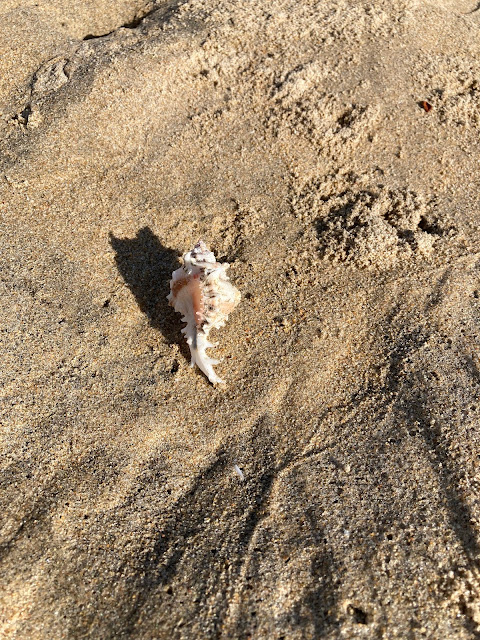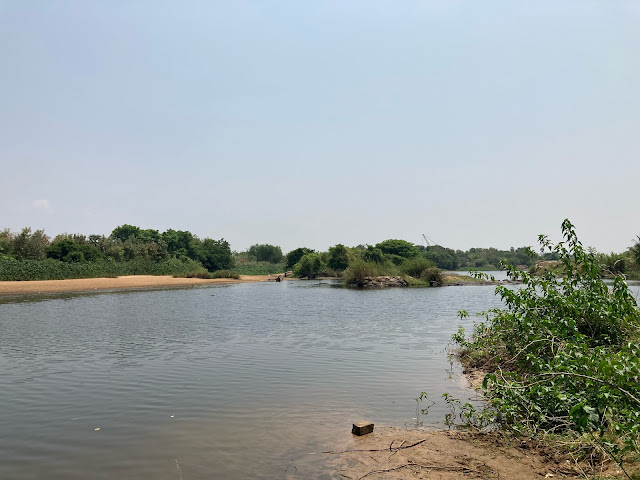Butterfly Walk for MNS Members – The Theosophical Society – July 29, 2023
By Sagarika
It was a nice and sunny Saturday morning, 20 of us gathered in TS for the Butterfly Walk led by M. Yuvan. Theosophical Society post rains is an amazing place; we could notice butterfly activities the moment we stepped into their premises.
The ‘Butterflies of Chennai’ booklet by Palliyur Trust and a sheet on depicting all the key Butterfly Behaviour – from nectaring to mud-puddling to chrysalis was distributed as we waited for everyone to join in.
 |
| Under the Premna tree, with the morphs of the Common Emigrant being shown by Yuvan. |
Yuvan started his briefing by sharing how he has been following butterflies and insect for last few weeks, and how the onset of the SW monsoon leads to a migration not only of butterflies but also of various other insects towards the Eastern coast.
He asked us to try and observe the different behaviour of the butterflies, going beyond just the name/ id. ‘’Know the name and then forget the name’’- that really set the tone for the Walk.
We started off by observing activity around a Premna tree, the group quickly spotted Lemon Pansy, Common Leopard, Tailed Jay and Common Jay. Yuvan went on to show the eggs and caterpillars of Emigrant as well as Tawny Coster. A floating Great Eggfly distracted some of us for few seconds before disappearing into the tree canopy.
It didn’t take much time for us to realise that the patches of Tridax had maximum congregation of different butterflies, the so-called weed is truly a butterfly magnet.
Through the Walk, Yuvan pushed us to observe more - observe the wings, the flight, the antennae, the height of flight.
I was surprised to learn that butterfly’s flight is very different from that of bird. Butterfly wings clap above to generate thrust, unlike birds who get majority of the thrust from the downstroke.
The Walk was filled with many interesting observations and discussions about various aspects of butterfly behaviour. Some key learnings were:
– Tawny Coster - male butterflies utilize a mechanical tactic – a mating plug or copulatory plug to reduce female re-mating.
 |
| Turnera subulata - White buttercups, favourite plants of the Tawny Coster, a more recent adaptation. We saw the Coster female looking to lay eggs on its underside. |
– Multi-generational migration of butterflies – each stage carried out by new generation of adults.
– Poisonous butterflies – Common Crow, the Tigers, the one which we see commonly around are all poisonous!!
– ‘Time compensated sun compass’ of butterflies which help them to understand their location in the world.
– Older generation of Crimson Rose migrate to Sri Lanka, never to return. Usually migration is round trip, in this case it seems to be dispersal enmasse post breeding boom.
Besides butterflies we saw many other insect like robber flies, stink bugs, spider hunter wasp, cricket hunter wasp, blue banded bees, beetles, ants, and grasshoppers of various kinds. The masked crab spider with a wasp hunt took many of us by surprise.
 |
| The Little Clown grasshopper nymph was my favourite. |
 |
| What looked like a wasp - Oreumenoides edwardsii - sitting on a flower... |
 |
| ...was actually a prey captured by a Crab Spider about a quarter of its size. Basically the spider just sucks out all the living juices off the wasp...quite gruesome to visualise this. |
 |
| Indian Green Lynx Spider and spiderlings |
On our way out, we saw Lime Swallowtails mud-puddling on a patch between the bushes. Some of us went on to spend few moments admiring the giant Sterculia apetala before calling it a day.
And just when we thought that we are done with the sightings, a Great Orange-tip floated into the Periwinkle for nectaring, and we all gasped at its sheer size. What an exciting finale!
The Walk lasted for close to 3 hours. We spotted 37 species of butterflies and umpteen other insects.
We are grateful to MNS member Geetha Jaikumar for all her support, without which this wonderful Walk wouldn’t have been possible and to Yuvan whose passion for nature made this Walk so much more meaningful.
BUTTERFLY LIST
Papilionidae
1. Common Jay
2. Common Mormon
3. Crimson Rose
4. Lime Swallowtail
5. Tailed Jay
Pieridae
6. Common Emigrant
7. Plain Orange-tip
8. Great Orange-tip
9. Psyche
10. Common Albatross
11. Common Grass Yellow
12. Small Grass Yellow rose
13. Three spotted grass yellow
14. Indian Wanderer Lycaenidae
15. Small Salmon Arab 16. Common Gull
Nymphalidae
17. Common Crow
18. Blue Tiger
19. Plain Tiger
20. Striped Tiger
21. Lemon Pansy
22. Yellow Pansy Hesperiidae 23. Angled Castor
24. Tawny Coster
25. Common Leopard 26. Great Eggfly
Lycaenidae
27. Common Pierrot 28. Zebra Blue
29. Lesser Grass Blue 30. Indian Sunbeam 31. Tiny Grass Blue 32. Forget-me-not
Hesperiidae
35. Indian Skipper
36. Oriental Straight Swift 37. Marbled Skipper
More photographs of the butterflies here.
































































%2Bcopy.jpg)